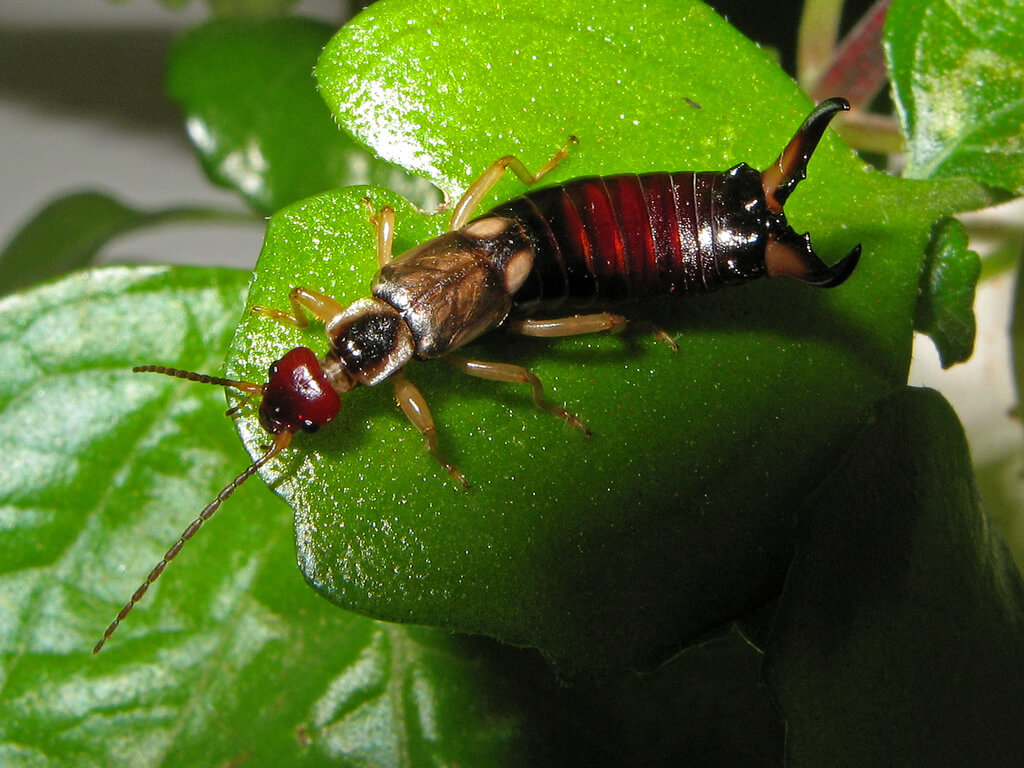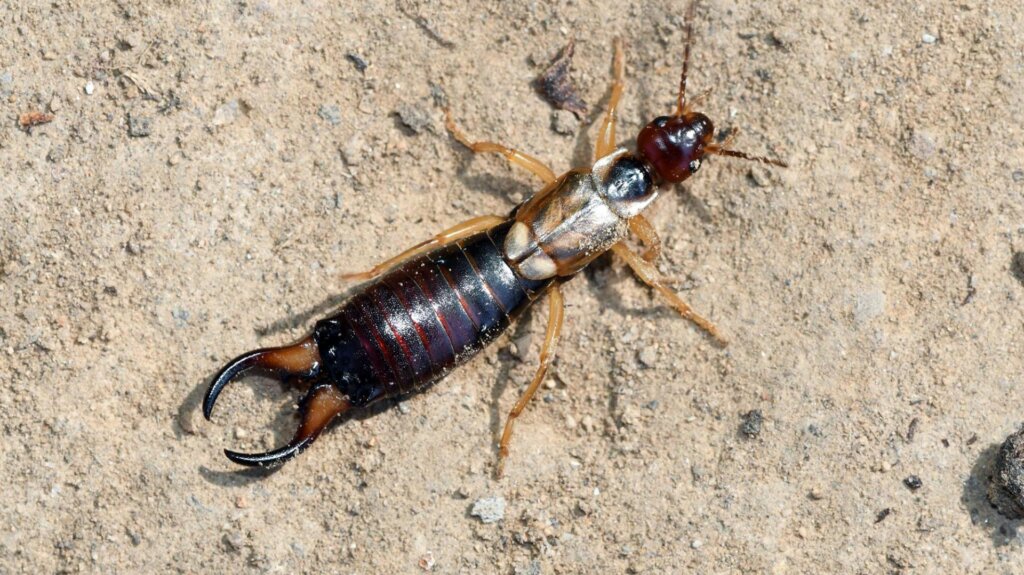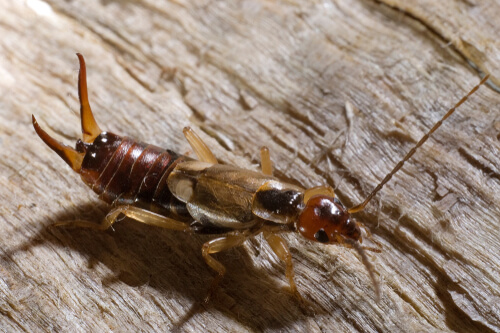Learn All About the Earwig, a Very Peculiar Insect

The earwig is a very peculiar insect, distinguished by the mobile appendages at the end of its abdomen, similar to some scissors. In addition, it’s a cosmopolitan insect, very easy to find in gardens, the countryside, and cities.
Despite this, we don’t usually tend to hear anything about the earwig that doesn’t have to do with it being either a pest or a pest controller. But fear not, here you’ll find a complete description of its biological makeup, so don’t miss anything – you’ll find out just how interesting it is!
Taxonomy and characteristics

The earwig (technically, the European earwig) has the scientific name of Forficula auricularia and is a dermatopteran insect (an order of insects characterized specifically by the pincer on its abdomen) of the family Forficulidae. Although there are about 70 species within this taxonomic family, in this article we’ll focus only on the one mentioned.
However, there’s something curious about the classification of earwigs. In 2020, an article revealed that they are cryptic species, that is, their DNA differs among several species that have the same appearance.
These genetic studies revealed that what was known as Forficula auricularia is at least a complex of 4 morphologically nearly identical species: Forficula aeolica, Forficula mediterranea, Forficula dentata and Forficula auricularia.
Excluding the pincers, the body of the earwig is 10 to 15 millimeters (0.4 to 0.6 inches) long, flattened, and flexible. It shows clearly identifiable sexual dimorphism, as the pincers of the males are curved and larger than those of the females, which are straight. In addition, they have 10 segments on the abdomen and females have only 8.
Although very rarely seen flying, it is actually a winged species.
Habitat of the earwig
This species is widely distributed in Western Asia, Europe, and North Africa. Even though it is native to these 3 regions, it was also introduced to the Americas and Australia in the early 20th century.
Its habitats are also very diverse. It’s easy to find in gardens, under the bark of living trees or in dead trunks, under stones and other damp shady places. It’s a well-known cosmopolitan species, especially in climates with little temperature fluctuation, such as the temperate zone of Europe.
It’s an omnivorous insect that feeds mainly on plants in its environment. However, it also acts as a cleaning organism, as it can consume decaying matter, both plant and animal.
This is where the controversy about its pest or pest-controlling character arises. The earwig, when it reproduces uncontrollably in places such as crops, can become a pest, as it tends to prefer the shoots to feed on and is capable of flying up to the highest plants. However, it’s also used to kill aphid pests, as they also hunt them for food.
Earwig behavior
It’s a nocturnal insect that rests in dark, damp places during daylight hours. It’s curious to note how they can live both solitary lives and in colonies, the former occurring only when females move away during the mating season.
Their main form of communication is by chemical stimuli. Adults release pheromones to find each other during the mating season, and these are received by chemoreceptors on their antennae. They also have compound eyes and hairs on the antennae that provide tactile information.
The pincers are also used for communication, either during mating or as a form of threat.
Reproduction

The breeding season for earwigs begins in September, when pairs meet underground to breed. Males wave their pincers to court the female, caressing her with them and trying to grab her. Fertilization of the eggs takes place inside the female. Occasionally another male may appear during courtship, and then both fight for the female using their claws.
In late winter, with spring setting in, females lay 30 to 55 eggs in a burrow dug in the ground. This is a species that cares for the eggs and hatchlings until they are independent at 2 months of age. The nymphs, in their first stage, are fed by the mother, but in the second stage they’re able to forage for their own food.
It has been discovered that females also take care of the abandoned eggs of others of their species.
Did you know any of these details about the earwig? We often pass judgment about whether we think they should be allowed to live near us. However, they’re very important members of the ecosystems they inhabit, so respect for their lives should always be the priority.
All cited sources were thoroughly reviewed by our team to ensure their quality, reliability, currency, and validity. The bibliography of this article was considered reliable and of academic or scientific accuracy.
- González-Miguéns, R., Muñoz-Nozal, E., Jiménez-Ruiz, Y., Mas-Peinado, P., Ghanavi, H. R., & García-París, M. (2020). Speciation patterns in the Forficula auricularia species complex: cryptic and not so cryptic taxa across the western Palaearctic region. Zoological Journal of the Linnean Society, 190(3), 788-823.
- Forficula auricularia (European earwig). (s. f.). Animal Diversity Web. https://animaldiversity.org/accounts/Forficula_auricularia/
- Van Meyel, S., Devers, S., & Meunier, J. (2019). Love them all: mothers provide care to foreign eggs in the European earwig Forficula auricularia. Behavioral Ecology, 30(3), 756-762.
- Bourne, A., Fountain, M. T., Wijnen, H., & Shaw, B. (2019). Potential of the European earwig (Forficula auricularia) as a biocontrol agent of the soft and stone fruit pest Drosophila suzukii. Pest management science, 75(12), 3340-3345.
